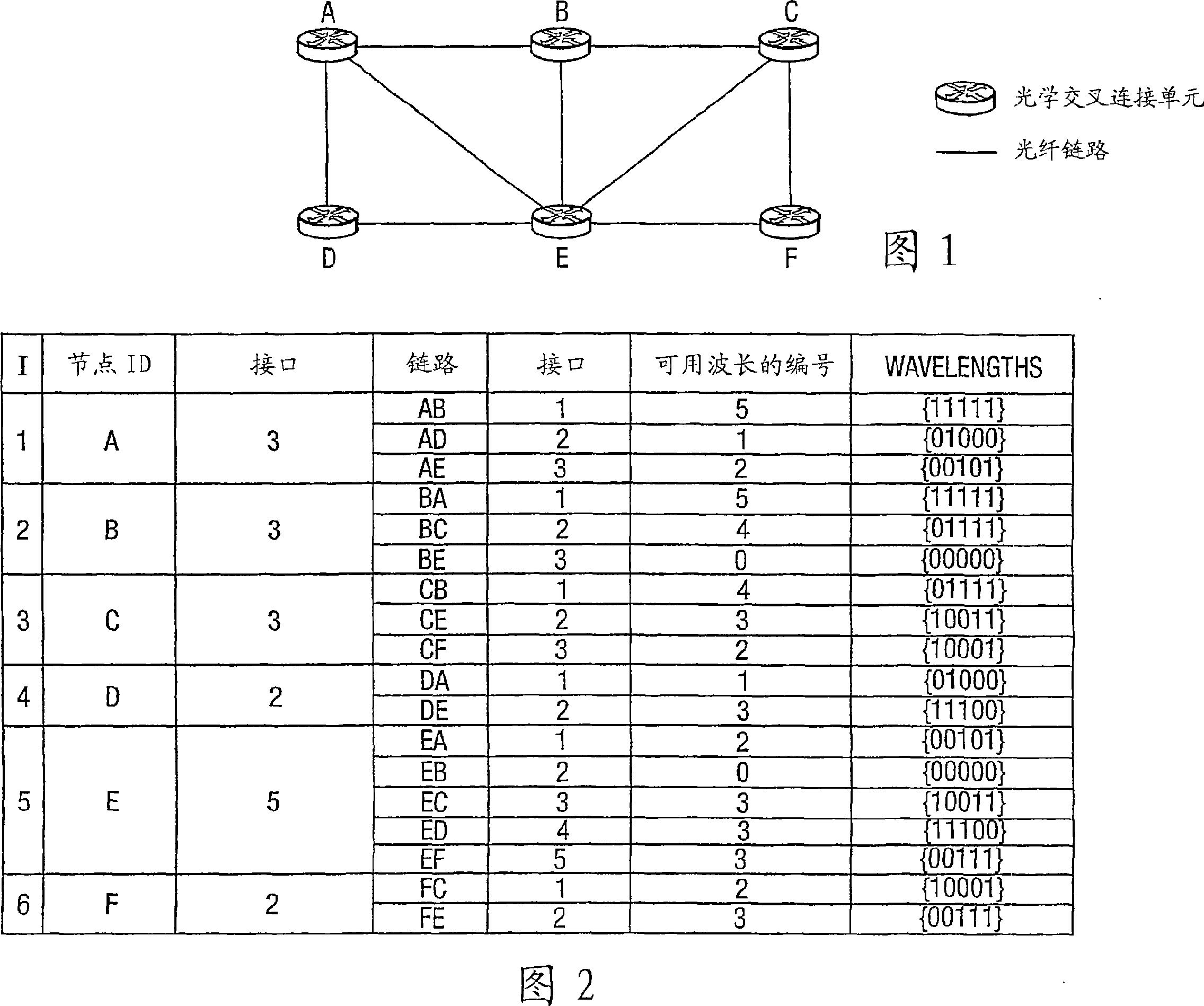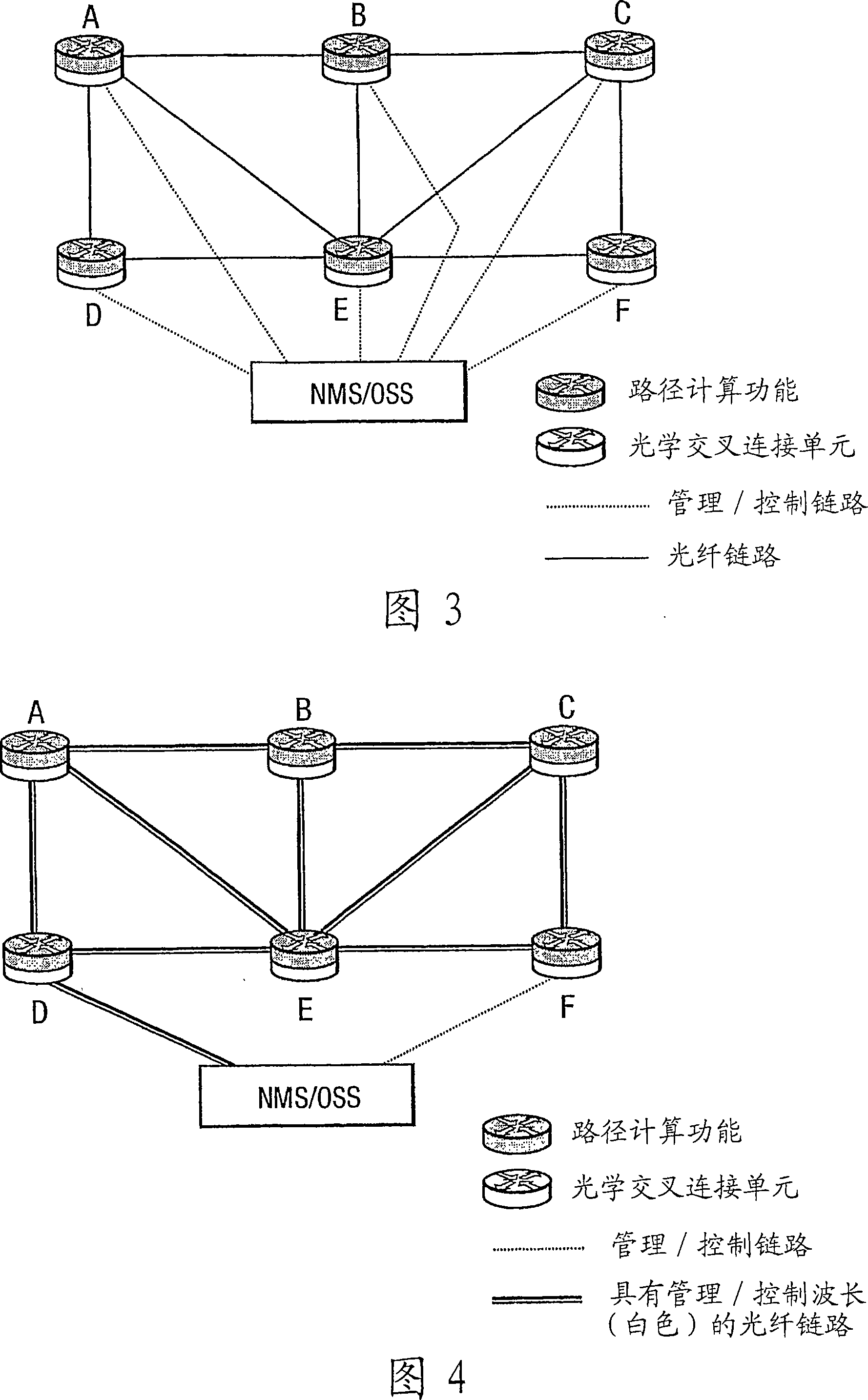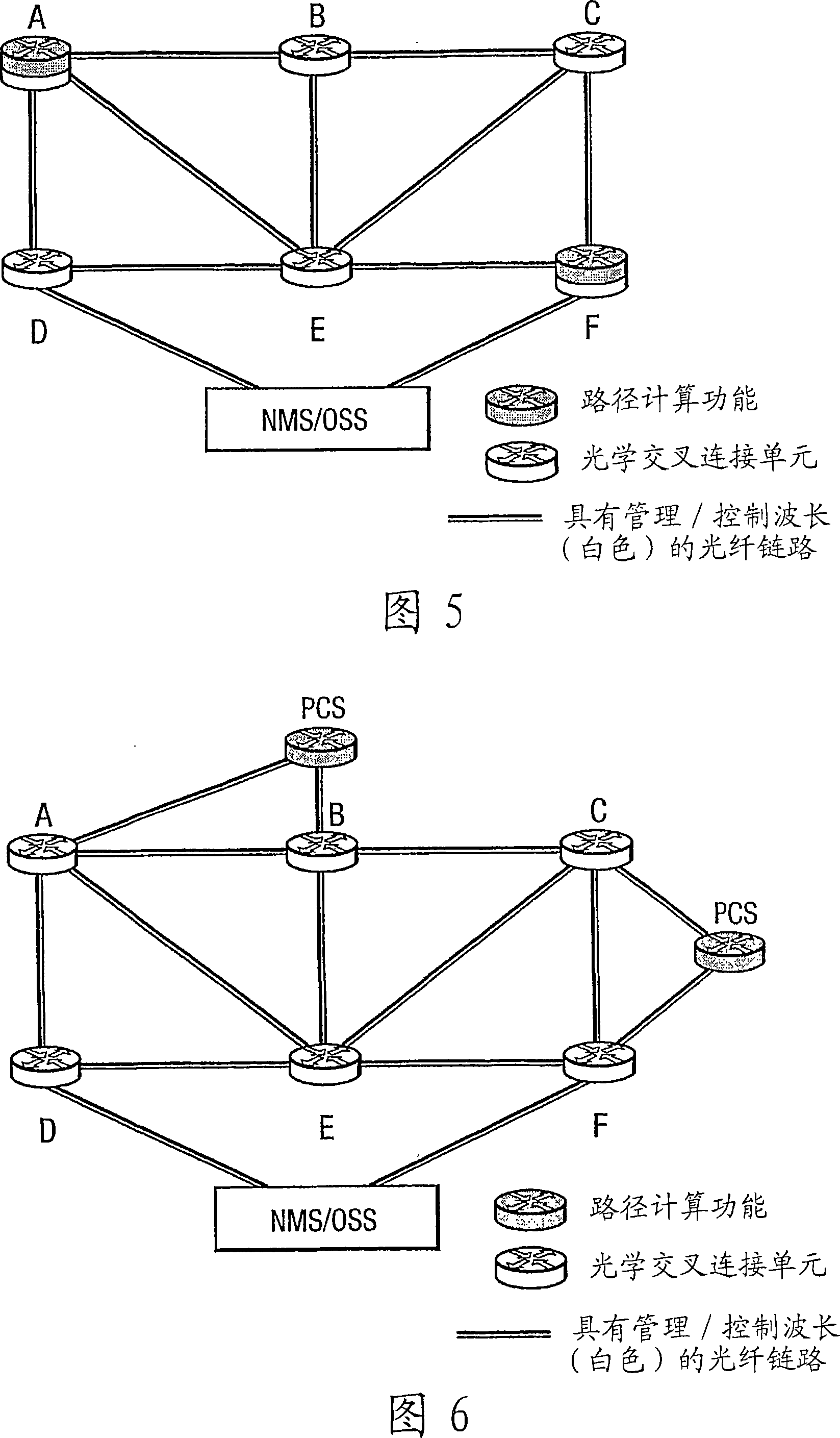Wavelength selection
A wavelength and path technology, applied in the field of optical data transmission along the path in the optical network, can solve the problems of no end-to-end, obstruction, no consideration of connection attempts, etc., and achieve the effect of improving the success rate
- Summary
- Abstract
- Description
- Claims
- Application Information
AI Technical Summary
Problems solved by technology
Method used
Image
Examples
Embodiment Construction
[0021] Figure 1 shows an all-optical network comprising six optical network nodes (A, B, C, D, E and F), more commonly referred to as optical cross-connect units or OXCs. A suitable OXC currently available is the Lambda NODE available from Lambda Optical Systems, Inc., Reston, Virginia, USA. Data is transmitted at specific wavelengths over the fiber optic links that interconnect the OXCs. Treat each direction of a fiber optic link as an independent, unidirectional link. On each OXC, data is received on the input port, switched in the optical domain and transmitted out on the associated output port without any optical-to-optical conversion. Using wavelength division multiplexing (WDM), several different wavelengths can be used simultaneously on each fiber link. The number of wavelengths each fiber link can support depends on the exact nature of the network being deployed and should be decided during the network design phase (eg, how much the deployer of the network wants to p...
PUM
 Login to View More
Login to View More Abstract
Description
Claims
Application Information
 Login to View More
Login to View More - R&D
- Intellectual Property
- Life Sciences
- Materials
- Tech Scout
- Unparalleled Data Quality
- Higher Quality Content
- 60% Fewer Hallucinations
Browse by: Latest US Patents, China's latest patents, Technical Efficacy Thesaurus, Application Domain, Technology Topic, Popular Technical Reports.
© 2025 PatSnap. All rights reserved.Legal|Privacy policy|Modern Slavery Act Transparency Statement|Sitemap|About US| Contact US: help@patsnap.com



